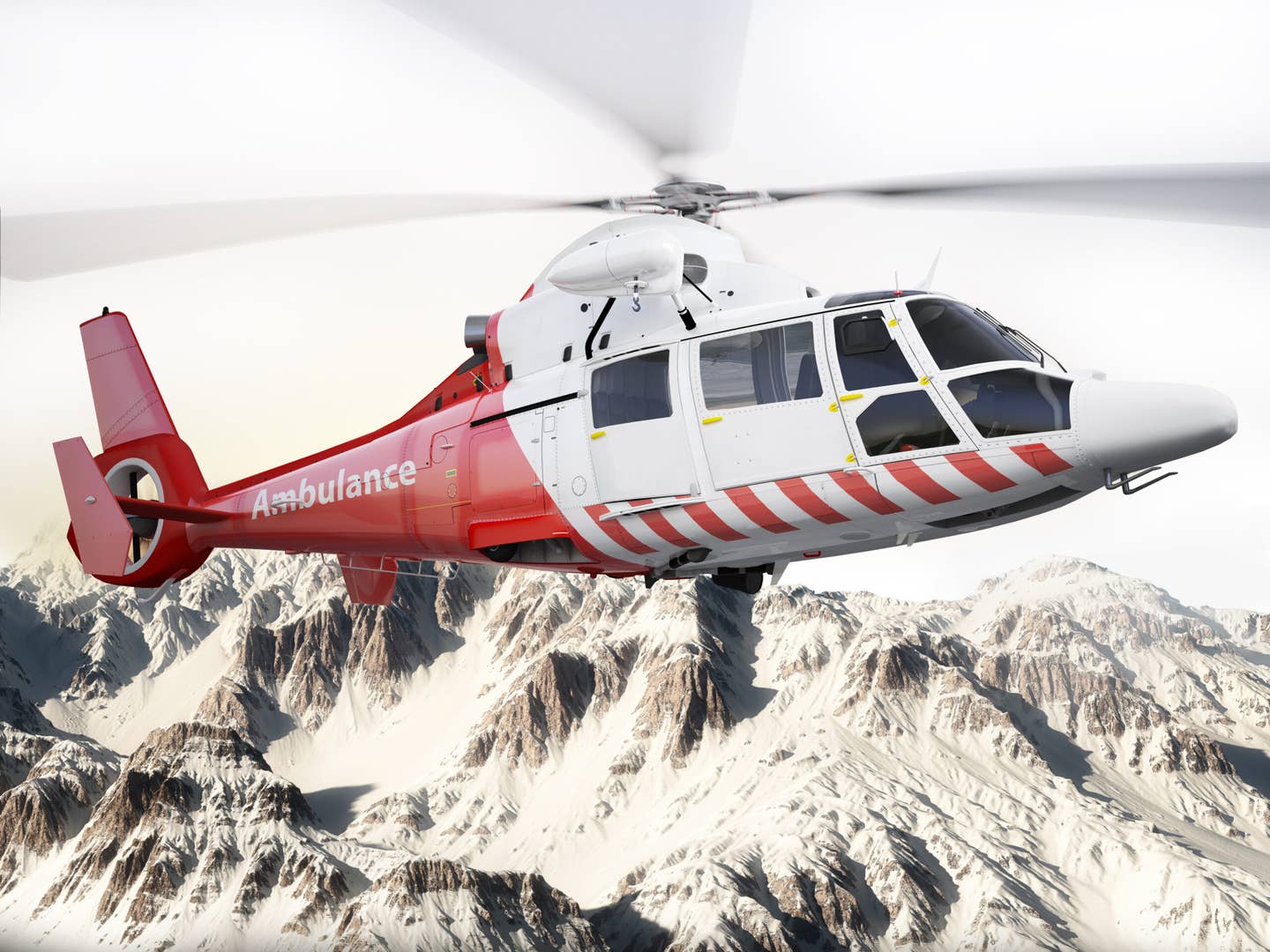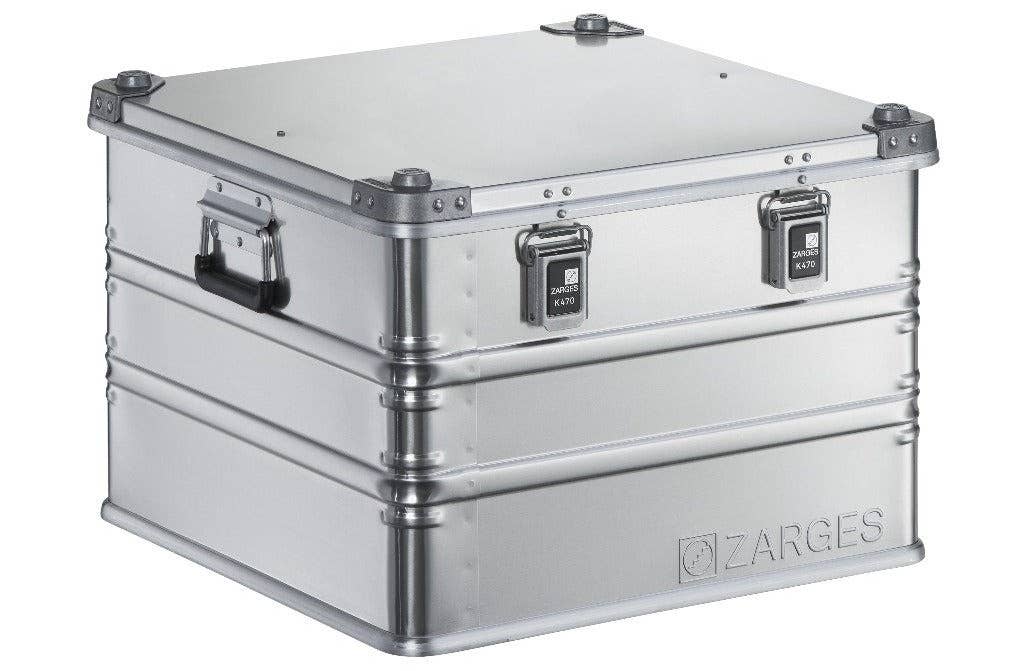How To Become an EMS Helicopter Pilot
EMS helicopter pilots must accumulate sufficient flight hours and pass stringent aviation tests to prepare for flying in potentially dangerous conditions to save lives.

EMS helicopter pilots save lives. [File photo: Shutterstock]
EMS helicopter pilots are part of an elite profession often described as rewarding, challenging, and sometimes dangerous. After many hours of flight training and certification, EMS helicopter pilots can earn good pay, fly sophisticated aircraft, and most importantly, save lives. The requirements are stringent. The standards are high. But ultimately, providing urgent care during emergencies can be a very satisfying way to make a living.
Easily become an airplane or commercial pilot online! Courses designed by industry experts can help you pass FAA tests and get into the sky!
Enroll NowWhat Is an EMS Helicopter Pilot?
EMS helicopter pilots around the world are called upon daily to perform at consistently high levels across two of the most demanding and complicated professional arenas: aviation and medicine. They’re tasked with flying safely to unfamiliar locations under all kinds of conditions to quickly transport sick and injured passengers to hospitals and other urgent care facilities.
What Do EMS Helicopter Pilots Do?
- Balance the helicopter’s load to help assist patients and medical staff.
- Receive requests for emergency flights.
- Get airborne as quickly as possible after flight requests.
- Fly safely, sometimes during challenging weather conditions, day or night.
- Analyze the safest approach in real time during every mission.
- Land safely in unfamiliar and potentially hazardous locations while avoiding obstructions.
- Take off safely and transport patients as quickly and safely as possible to a hospital or other healthcare facility for immediate treatment by medical experts.
EMS Requirements
- Be at least 18 years of age.
- Hold a current and valid FAA commercial pilot certificate, rotorcraft category, and helicopter class rating.
- Possess a current and valid FAA helicopter instrument rating.
- Obtain and maintain an annual FAA second-class medical certificate, although some employers may require a first-class medical certificate, which must be renewed every six months.
- Type-specific helicopter training may likely be required by the operator.
How Long Does It Take to Become an EMS Helicopter Pilot?
Depending on how much time you devote to training and studying, it can take months or possibly years to become an EMS helicopter pilot. Even after completing the required training and certifications, different employers often set their own various standards for their pilots. Recent flight school graduates will likely need to build additional flight hours required for a particular operator. Some employers are looking for pilots with at least 2,000 hours of total time, with a minimum of 1,000 hours in turbine helicopters, depending on the company.
What Skills Do You Need to Become an EMS Helicopter Pilot?
Key skills for EMS helicopter pilots include: high-level navigation skills, multi-tasking, performing effectively under pressure, superior communication and interpersonal skills, and physical stamina. Ideal pilots should be trained in patient care, essential medical knowledge, first-aid treatment, and cardiopulmonary resuscitation (CPR).
Average Salary
Although salaries for EMS helicopter pilots vary widely depending on experience, skills, location, and other factors, the U.S. average is around $114,000 per year, according to salary reporting websites. The top 10 percent of EMS helicopter pilots reportedly make more than $134,000 per year.
6 Steps for Becoming an EMS Helicopter Pilot
A typical path to joining the ranks of EMS helicopter pilots is a step-by-step process that includes classroom education, real-world training, and requisite certificates and ratings. Here are six basic steps:
Step 1: Complete Your Degree
Although a formal college degree is not mandatory to work as an EMS helicopter pilot, many operators prefer or require at least some college education. A bachelor’s degree or associate degree with aviation elements could be helpful in earning the required certification or flight training scholarships.
Step 2: Take the Physical Examination
FAA-required physical examinations are performed by aviation medical examiners (AME). Their contact information is available on the FAA website. Although EMS helicopter pilots are required to have a second-class medical certificate, some employers require a first-class medical certificate. An AME evaluates pilot eyesight, color vision, hearing, blood pressure, and other criteria.
Step 3: Get Your Private Helicopter Pilot License
You can earn an FAA private pilot certificate at an accredited flight school, which typically offers access to ground school classes, training aircraft, and certified flight instructors (CFI). The certificate includes multiple requirements, but they basically cover these four elements:
- Ground School: Classroom-style lessons on basic theory surrounding aviation along with other important information necessary to pilot an aircraft safely and legally.
- Flight Education: Hands-on student flight training in an aircraft—most often under the supervision of a CFI.
- 40 Hours: The FAA’s requirements to earn a private pilot certificate include completing a ground school course and 40 hours of flight training, which is divided between hours flown with a CFI and solo. It may take additional hours of flight training before most pilots are proficient enough to pass a practical test—or check ride—with an FAA designated pilot examiner (DPE).
- FAA Exam: The written knowledge exam for private pilot certification tests a student’s knowledge of concepts surrounding aviation. It is a multiple-choice test and taken at a designated testing center. A score of at least 70 percent is required to pass.
Step 4: Obtain Instrument Certification
For some types of flying, the FAA requires pilots to earn an instrument rating for flying under instrument flight rules (IFR) conditions—when pilots rely only on flight instruments to aviate and navigate. An instrument rating is required for EMS helicopter pilots.
Step 5: Commercial Helicopter Pilot License
Without a commercial pilot certificate with a rotorcraft category and a helicopter class rating, you cannot become an EMS helicopter pilot. The process is similar to obtaining a private pilot certificate but more rigorous. Find an FAA-approved FAR Part 141 flight school and accomplish the following elements:
- Knowledge Exam: This written knowledge test demonstrates knowledge of the extensive experience and high mastery of aviation procedures required to pilot commercial aircraft. It’s multiple choice and administered at designated test centers. A score of 70 percent is required to pass.
- Additional Education: To build the necessary flight hours to qualify for opportunities as an EMS helicopter pilot, you may want to enroll in a course to become a certified flight instructor (CFI). As a CFI, you can build flight hours toward your EMS helicopter pilot career goal, while getting paid to teach students about flying.
- 150 Hours: A pilot must log at least 150 hours of flight time as a pilot, including 100 hours in powered aircraft, of which 50 must be in helicopters, to earn a commercial pilot certificate with a rotorcraft category and a helicopter class rating. Also required: 100 hours as a pilot in command in powered aircraft, which includes at least 35 hours in a helicopter and 10 hours of cross-country flight in helicopters.
- Oral and Practical Exam: A DPE will administer an oral exam and practical test—aka check ride—to determine if the pilot has learned the requisite skills and knowledge for the commercial pilot certificate.
Step 6: Decide to Pursue Airline Transport License
The next level of pilot certification above the commercial pilot certificate is the airline transport pilot (ATP) certificate. For helicopter pilots, an ATP certificate requires 1,200 hours of flight time. Although the FAA doesn’t mandate ATPs for EMS helicopter pilots, many fleet operators and employers prefer or even require them. Also, holding an ATP can give you an edge with hiring employers, and it could make a difference in winning a valuable job opportunity. Some employers offer programs that will pay for their pilots to obtain an ATP helicopter certificate.
Pros and Cons of Becoming an EMS Helicopter Pilot
Just like any other profession, the job of an EMS helicopter pilot includes positive aspects, such as personal satisfaction, and negative traits, like a high-pressure work environment.
Pros
- Humanitarian, lifesaving missions generate personal satisfaction
- Fleets are younger and well-maintained
- Relatively high pay
- Adequate vacation time
- Consistent schedule
- Available downtime between flights
- Generally good job security
Cons
- Can be extremely challenging and sometimes dangerous
- High-pressure work environment
- Long hours, weekend, night, and overnight shifts
- Relatively few flight hours, increasing the need for training flights
Become an EMS Helicopter Pilot To Open New Doors
The pathway to a career as an EMS helicopter pilot may be long and challenging, but it ultimately could open doors to a satisfying and well-paying profession critical to saving countless lives around the world. To learn more about flying careers and all things aviation, subscribe to FLYING Magazine.
FAQ
Are EMS pilots also paramedics?
Yes, sometimes, but it’s generally not required. EMS helicopter pilots often fly with a flight paramedic on board whose primary responsibility is caring for patients.
Where can I find EMS helicopter pilot jobs?
EMS helicopter pilot job opportunities can be found on the major job search sites, but also check online hospital job sites, as well as sites for EMS helicopter professional organizations.
How much is helicopter pilot school?
Every flight school decides its own rates, which can vary widely. For pilots who already have a commercial pilot certificate in another aircraft category, training to earn an add-on helicopter rating could cost around $18,000 for instruction, flight time, the practical test, and the check ride. Some pilots may need more flight time to become proficient, which will cost more. An add-on helicopter instrument rating typically could cost around $10,500. Overall, tuition, flight fees, supplies, and other expenses required to obtain all necessary helicopter pilot certificates and certifications could cost an estimated $130,000

Sign-up for newsletters & special offers!
Get the latest FLYING stories & special offers delivered directly to your inbox







